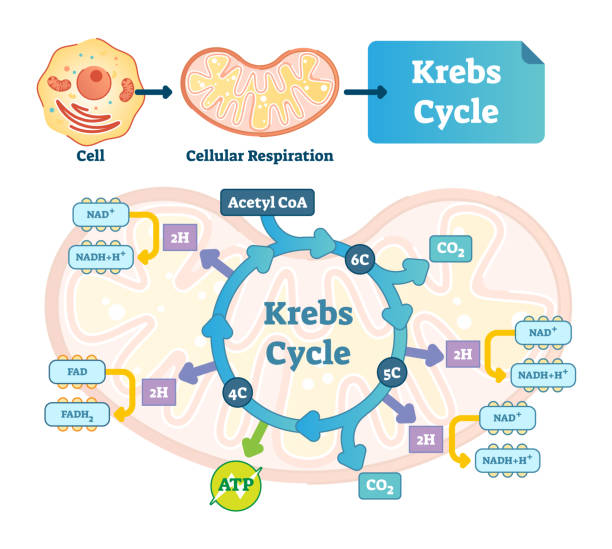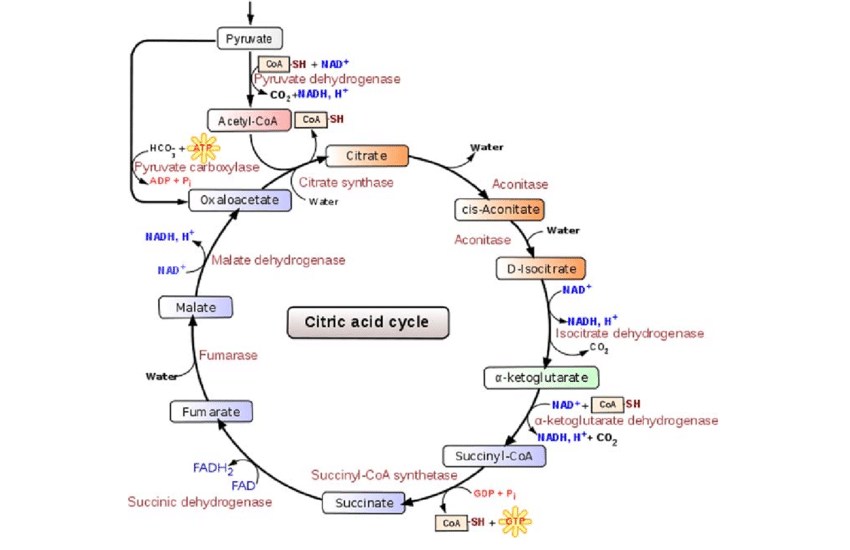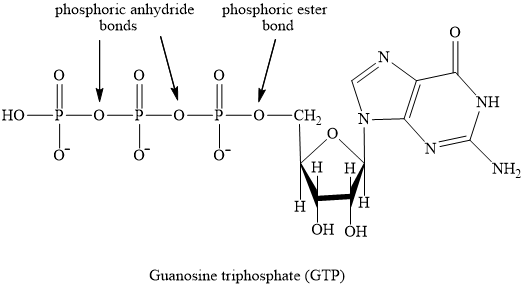Last Updated on May 3, 2025 by Muhamed Elmesery
Welcome to our blog post on mastering the citric acid cycle, also known as the Krebs cycle or tricarboxylic acid (TCA) cycle. In this post, we will delve into the intricacies of this fundamental metabolic pathway, exploring its significance, steps, and key concepts. Whether you’re a student, researcher, or simply curious about cellular respiration, this blog aims to sharpen your understanding of the Krebs cycle.

Table of Contents
What is another name for the Krebs cycle?
Krebs cycle is also known as citric acid cycle or tricarboxylic acid (TCA) cycle, named after its discoverer, Hans Krebs.
What is the Krebs cycle in simple terms?
Krebs cycle or Citric acid cycle or TCA cycle is a chain of chemical reactions that occur in the body (exactly in the mitochondrial matrix) to produce energy in aerobic respiration( allows cells to use energy from carbohydrates.). It is an important part of cellular metabolism.
What is the purpose of the Krebs cycle?
The purpose of the Krebs cycle is to combine carbon dioxide (CO2) and water using energy from the electron transport chain (convey the carbon atoms within the acetyl group to be oxidized for the production of energy). The resulting molecules are then used for the purposes of generating energy and building cells.
Krebs cycle has several crucial functions:
- Energy Production: The Krebs cycle is the process that is responsible for the oxidation of the acetyl group, leading to the ATP synthesis (in cooperation with oxidative phosphorylation). This process involves the generation of high-energy molecules (NADH, FADH, and ATP) that provides energy for several synthetic processes.
- Formation of Substances: TCA cycle produces intermediate compounds that are important in the synthesis of vital substances such as amino acids and fatty acids. This aspect of the Krebs cycle is essential for the synthesis of various cellular components.
- Regulation: The Krebs cycle is regulated by the availability of enzymes called the NAD+ and FAD substrates. High concentrations of NADH can inhibit the cycle, demonstrating its tight regulation based on the cell’s energy needs.
For more information about Krebs cycle enzymes, check our blog “The Krebs Cycle | A Step-by-Step Explanation”
What are the steps of the Krebs cycle?
The process begins with the intake of food, which is broken down into small molecules and digested by the stomach and intestines. These molecules are then absorbed by the body through the small intestines and transported to the liver via the bloodstream. In the liver, the absorbed molecules are broken down further into smaller pieces called amino acids.
In the next step, these amino acids are converted into glucose through a series of chemical reactions called phosphorylation. Then, the glucose enters the main cells of the body and can be used for energy or can be stored as glycogen for later use.
TCA cycle begins by breaking down pyruvate and releasing CO2 as a byproduct. This carbon can then enter different pathways depending on what type of molecule it bonds with, either O2 or NAD+. The results of this reaction are used for ATP formation as well as for acetyl CoA formation.

Look at the previous diagram and check the following steps!
Kreps cycle occurs over eight steps:
- Step 1 ( Citrate Formation)
Acetyl CoA reacts with oxaloacetate in the presence of citrate synthase enzyme to form citrate or citric acid.
- Step 2 ( Citrate Isomers Formation)
In the second step, citric acid is first converted to an intermediate compound called cis-aconitate, then converted to isocitrate which is an isomer of citrate in the presence of aconitase enzyme.
- Step 3 ( Isocitrate decarboxylation and oxidation)
In the third step, Isocitrate compound is oxidized to form alpha-ketoglutarate in the presence of isocitrate dehydrogenase enzyme. As a result of this step, carbon dioxide is released and a NADH molecule is formed.
- Step 4 ( Succinyl-CoA Formation)
In the fourth step, the Alpha-ketoglutarate compound is oxidized and binds to coenzyme A, to form succinyl CoA in the presence of a-Ketoglutarate Dehydrogenase enzyme which liberates:
- Second molecule of NADH.
- Carbon dioxide.
- Proton.
- Step 5 ( GTP Production)

Pick the Best Virtual Plan or You
In the fifth step, Succinyl CoA is converted to a succinate compound in the presence of Succinyl-CoA synthetase enzyme which forms a molecule of GTP through the process of GDP phosphorylation. So we can consider that the result of this step is releasing GTP molecules, the Coenzyme A and also the formation of succinate.
- Step 6 (Fumarate Formation)
In the sixth step, succinate compound is oxidized and converted to fumarate in the presence of Succinate Dehydrogenase enzyme. In this step, FADH₂ molecule is produced
- Step 7 ( Malate Formation)
In the seventh step, Fumarate compound is converted to malate in the presence of fumarase enzyme. In this step, H2O is incorporated to form the structure of the final product (malate) so we can consider fumarase enzyme as hydrolase enzyme.
- Step 8 (Oxaloacetate Formation)
In the eighth and final step, Malate compound is converted to oxaloacetate in the presence of malate Dehydrogenase enzyme. Here the NADH molecule no.3 in the cycle is produced.
What molecule is regenerated during the process of the Krebs cycle?
Oxaloacetate is the regenerated compound that allows the cycle to begin again and continue.
Which molecule is passed on to the citric acid cycle from glycolysis?
Pyruvate is the molecule that passed on to the citric acid cycle from glycolysis. Pyruvate is transformed into acetyl CoA, which then enters the Krebs cycle to start the series of chemical reactions that produce the energy molecules and essential cellular components.
What is the first chemical produced in the Krebs cycle?
Citric acid is the first chemical produced in the Krebs cycle. This is why the Krebs cycle is also known as the citric acid cycle, which starts with the condensation of acetyl group with oxaloacetic acid (OAA) and water to yield citric acid. It marks the beginning of the series of reactions that lead to the generation of the energy molecules
What is produced during the Krebs cycle?
Each Krebs cycle produces:
- 3 NADH molecules.
- 1 FADH₂ molecule.
- 1 GTP molecule.
- 2 CO2 or carbon dioxide molecules.
- 3 (H+) hydrogen ions.
What do students learn in the cellular respiration the Krebs cycle simulation?
After conducting Krebs cycle simulation, students realized that the Krebs cycle is crucial for understanding how energy is produced in cells. It is essential for the proper functioning of cells, thereby enhancing the learning experience by making it more interactive and engaging.
These virtual lab simulations also enrich the experimentation process through visual aids that guide the students through the process. Students no longer get stuck, but rather enjoy the help of a 3D virtual lab partner when needed, while also receiving guidance to prevent wrong choices. Moreover, students are quickly tested on the basic results of their experiment to ensure an enhanced learning experience.
Unlock the World of Biology: Dive into PraxiLabs’ Virtual Learning Environment Today
PraxiLabs offers a comprehensive virtual biology lab experience that provides a range of benefits for educators and students alike. The virtual labs feature highly interactive and immersive 3D science experiments simulations that mimic real-life labs, allowing users to engage in hands-on experiments without any hazards or high costs associated with traditional labs.
Our simulations cover a variety of topics in biology, chemistry, and physics, enabling students to learn and understand scientific concepts and techniques in a dynamic and engaging manner.
On PraxiLabs you can find different virtual labs simulations in Biology accessible anytime and anywhere
 PraxiLabs A virtual world of science
PraxiLabs A virtual world of science





